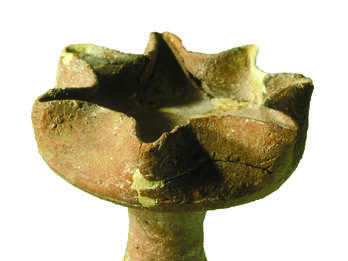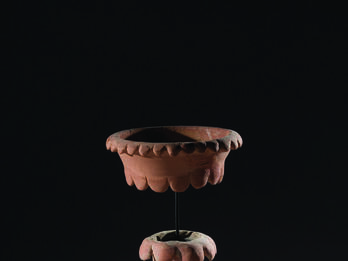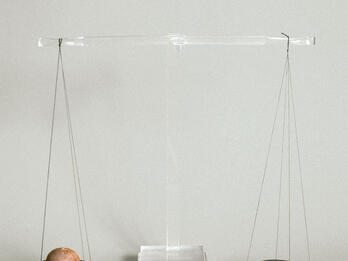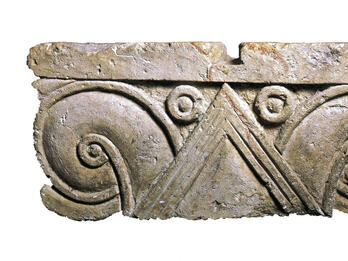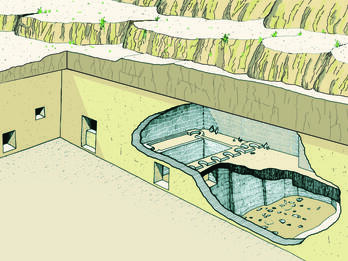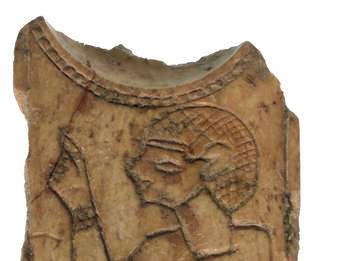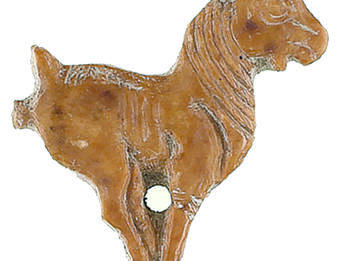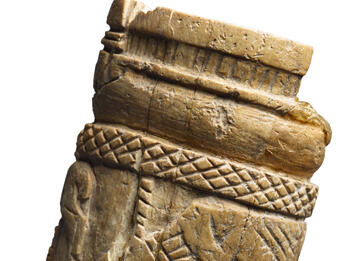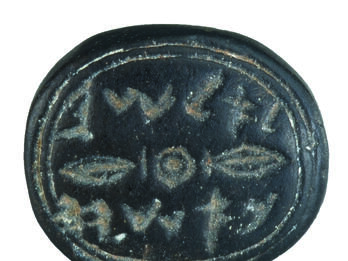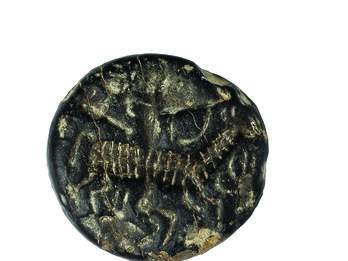Showing Results 1 - 10 of 159
Restricted
Image
Its multiple (seven) spouts and pedestal make this lamp from the sanctuary area of Tel Dan unusual. Lamps like this could be as tall as 9 inches (23 cm) and as wide as 6.7 inches (17 cm) in diameter…
Places:
Dan, Land of Israel (Tel Dan, Israel)
Date:
Iron Age II, 9th–8th Century BCE
Subjects:
Categories:
Restricted
Image
The chalice, covered with red slip (a thin mixture of red clay and water), consists of a tall, hollow stand and a separate bowl; both parts are decorated with downturned petals. Together they stand…
Places:
Arad, Land of Israel (Tel ‘Arad, Israel)
Date:
Iron Age IIA (?)–IIB, 9th (?)–8th Century BCE
Subjects:
Categories:
Restricted
Image
Balance scale (reconstruction). Pans from Iron Age II (ca. 980-586 BCE). Balance scales were likely made mostly of wood. No complete example has survived, but they are depicted in ancient Near Eastern…
Places:
Land of Israel (Israel)
Date:
Iron Age IIC, 7th–6th Century BCE
Subjects:
Restricted
Image
The palm and the palmette are common iconographic elements in ancient Near Eastern art, appearing, for example, in ivory decoration (see Ivory and Bone Carvings and Engraved Seashells) and in Assyrian…
Places:
Ramat Rahel, Land of Israel (Ramat Rahel, Israel)
Date:
Iron Age II, Late 8th–Early 7th Century BCE
Subjects:
Categories:
Restricted
Image
A group of elaborate tombs was found on the slopes of Jerusalem’s Hinnom Valley, including a cluster at Ketef Hinnom behind what is now the Menachem Begin Center. This is an artist's reconstruction of…
Places:
Ketef Hinnom, Land of Israel (Jerusalem, Israel)
Date:
Iron Age IIC–Early Persian Period, 7th–5th Century BCE
Subjects:
Categories:
Restricted
Image
This spoon from Hazor has a wide handle intricately incised on its front with a sequence of palmettes curving upward instead of the more common downward-turning volutes. The spoon’s use is unclear. It…
Places:
Hazor, Land of Israel (Tel Hazor, Israel)
Date:
Iron Age II, 8th Century BCE
Subjects:
Categories:
Restricted
Image
In this ivory inlay, found in Jerusalem (Ophel), incised lines indicate the goat’s fur, especially around the neck, and deeper lines detail the legs. The goat’s feet are all very close together…
Places:
Jerusalem, Land of Israel (Jerusalem, Israel)
Date:
Iron Age IIA, 10th–9th Century BCE
Subjects:
Categories:
Restricted
Image
The primary register of this handle from Hazor shows two grazing caprids (perhaps deer or gazelles), a popular motif (see “Bulla of Shebanyahu Son of Samak, with Grazing Doe”). Beneath them is a…
Places:
Hazor, Land of Israel (Tel Hazor, Israel)
Date:
Iron Age IIB, first Half of 8th Century BCE
Subjects:
Categories:
Restricted
Image
A double-line border surrounds the inscription on this seal, made of black paste or serpentine (a magnesium silicate), found at Arad. A central boss with flanking lotus buds separates the names…
Places:
Arad, Land of Israel (Tel ‘Arad, Israel)
Date:
Iron Age IIC, 7th–6th Century BCE
Subjects:
Categories:
Restricted
Image
This stamp seal depicts an archer shooting at a fleeing quadruped, possibly an antelope. The action is difficult to make out. From the viewer’s perspective the archer is behind the animal while the…
Places:
Moza, Land of Israel (Motsa, Israel)
Date:
Iron Age IIA, Late 10th–Early 9th Century BCE


